Today I'd like to take you for another tour in the past, in the 17th century to be precise. Last week I visited an exhibition which was showing to the visitors what life in Marosvásárhely (Targu Mures) was in the 17th century. The exhibition was organized by the history museum of the city and it was a very interesting one.
This exhibition was a bit different from what you usually see in museums. Going back to the 17th century is not exactly a walk in the park, especially when the objects at your disposal are limited. This is when the advantages of the digital era are coming in handy.
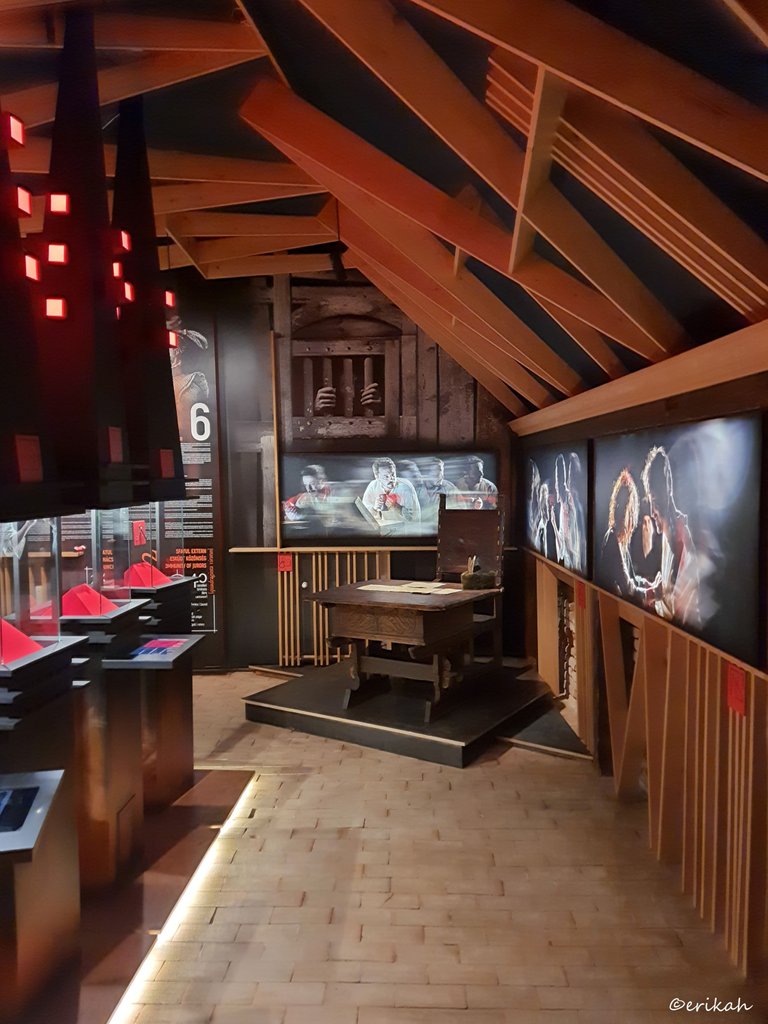
The first glance into this room already gave you the idea that the displayed objects were not the only things to see.
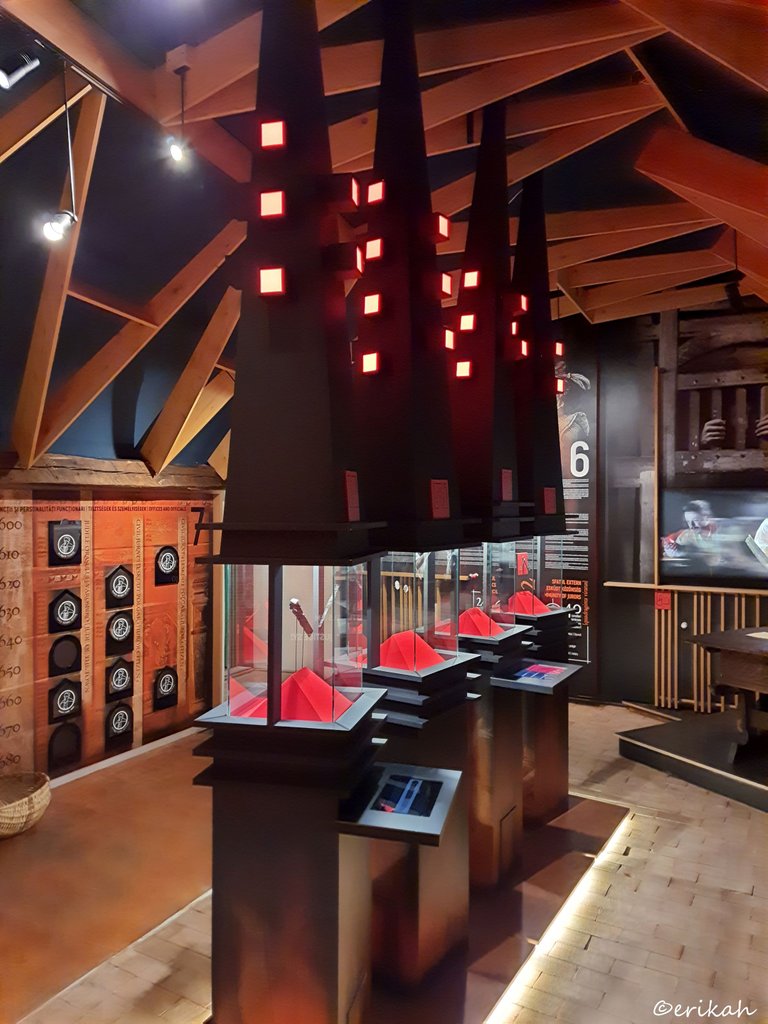
The room was small, but the design was very interesting. I loved this brown tone, which accompanied the whole exhibition.

There were these photos on the wall, which most likely were taken during a theater performance.
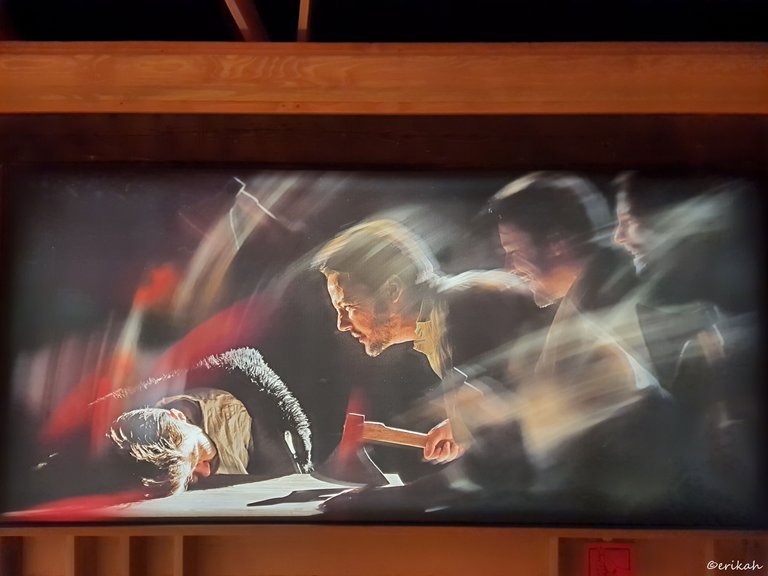
I'm not sure if I'm the only one or not, but I loved these photos. They were manipulated obviously, but served the purpose well. Most likely this is how interrogations took place in the 17th century.
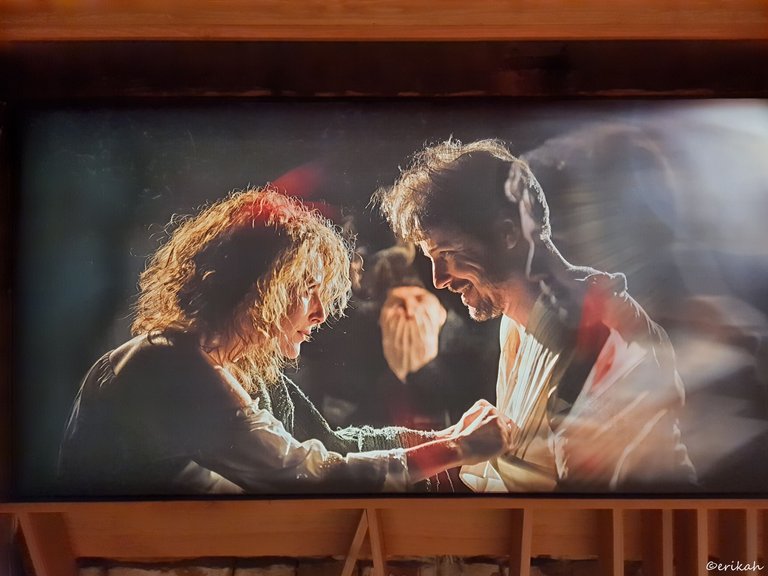
By the way, the light you see on the right was on the photos and not on my photograph. If you have a closer look, only the photos have the light, the wall doesn't.
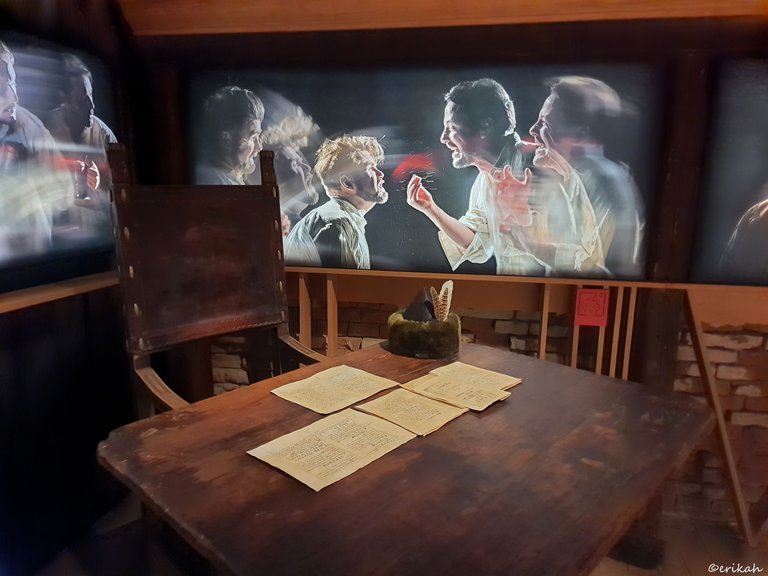
Unfortunately space was very limited, I could not find a better angle, so I did what I could to take some half decent photos. This is a wooden desk and chair, used by someone in a key position.
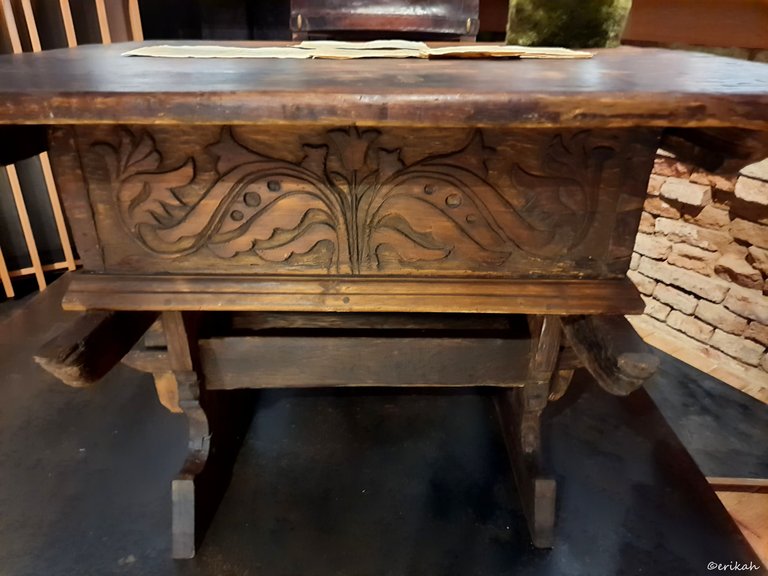
It was a very simple desk by our standards, but most likely stylish and elegant in those times.
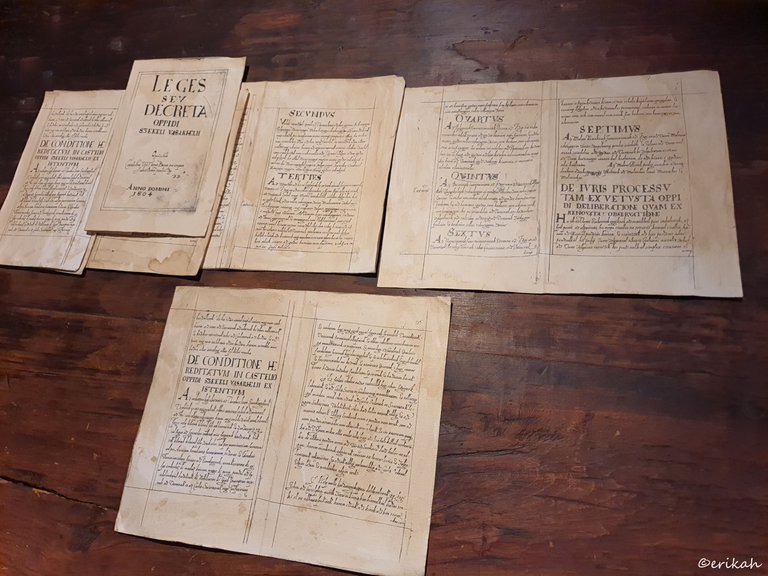
This was where things started to get really interesting. These were handwritten laws from 1604. The city gained its independence, which meant the city council, or whatever the management was called back then was able to have its own legislation. I was trying to determine whether these papers were original but couldn't.
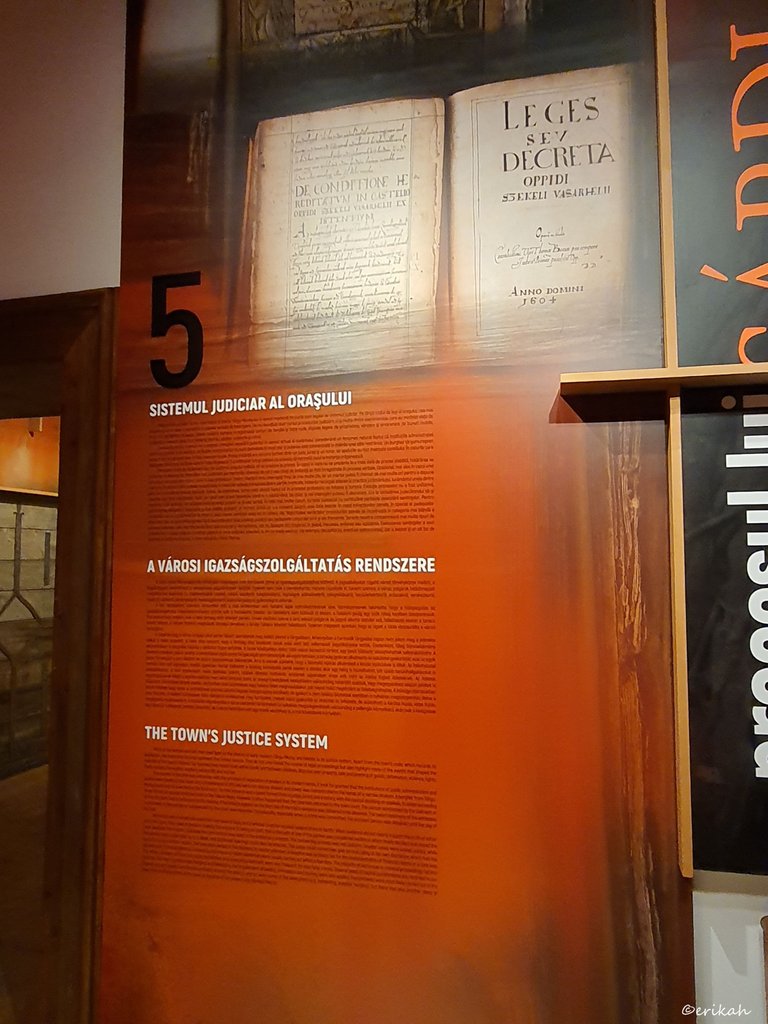
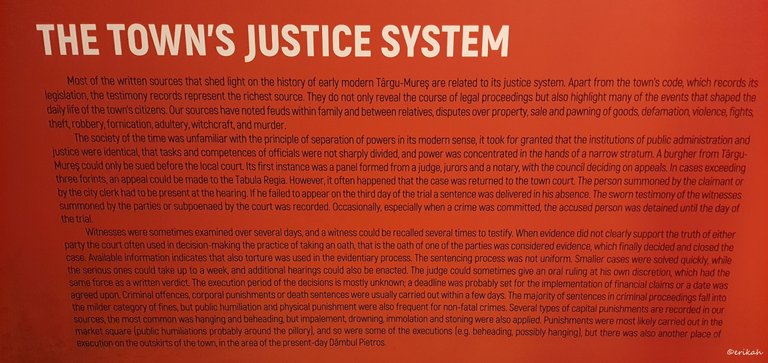
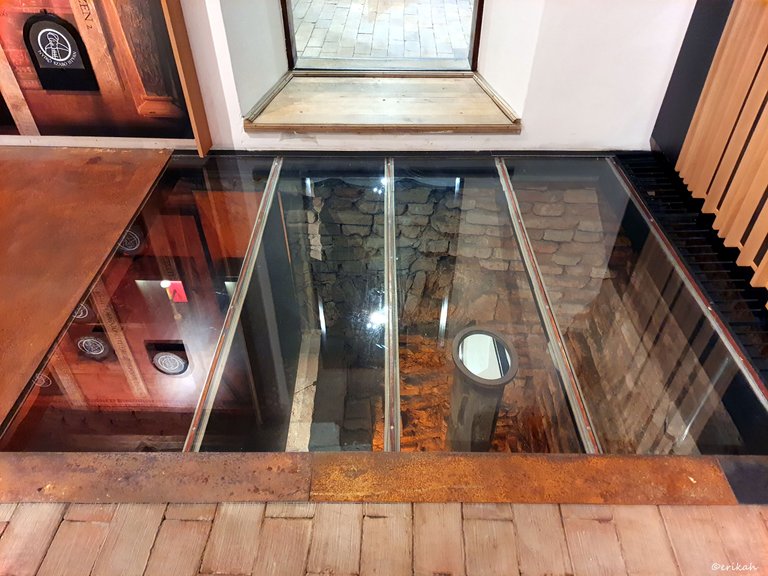
One of the coolest thing you can see at an exhibition is a glass floor, which allows you to see what is below. I was hoping to visit this part of the basement, but it wasn't open, that's why the glass floor I suppose.
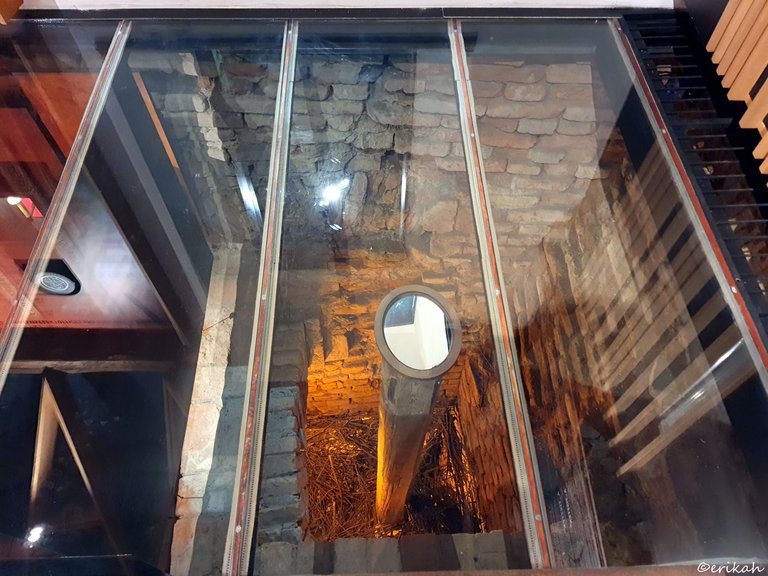

Here you could read about the town administration, council and magistrates.
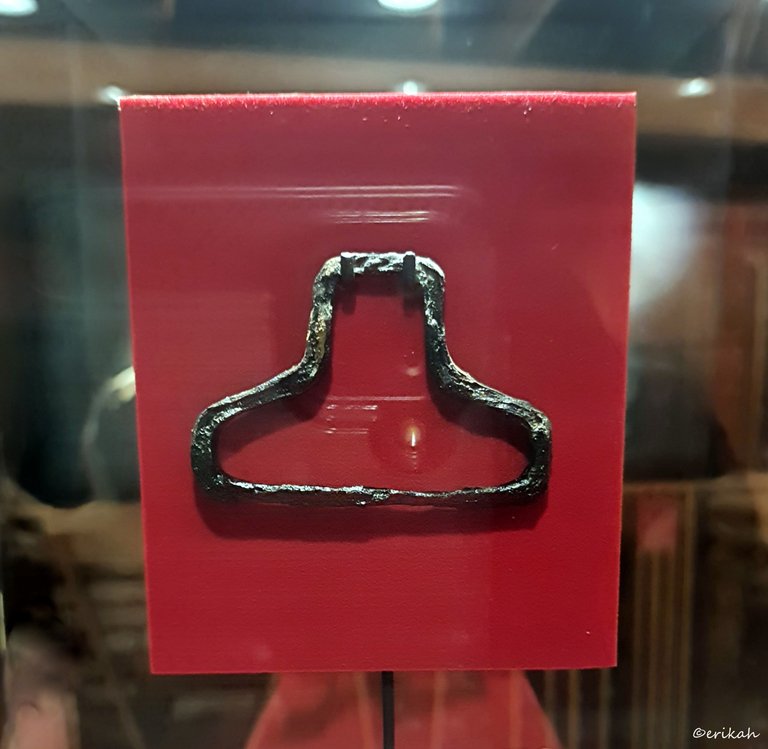
There were these objects that archeologists found during the excavations.
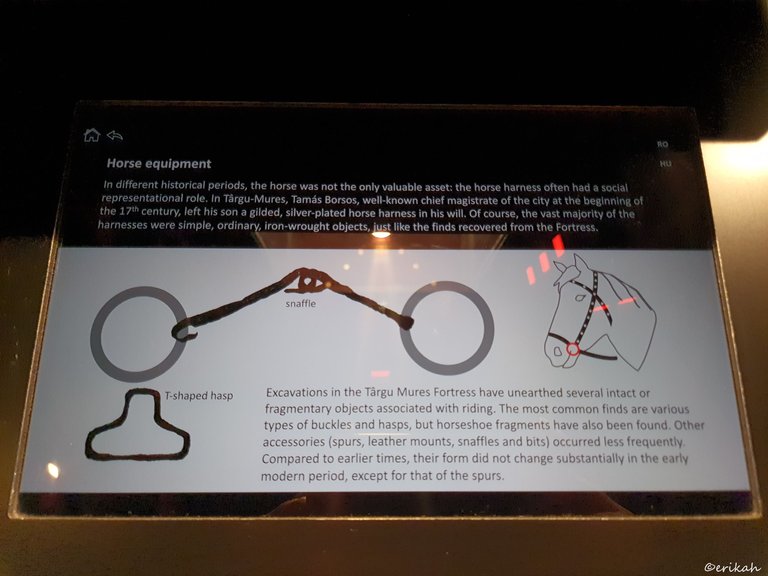
You could read the history of the objects on these tablets, so I took some photos to share with you.
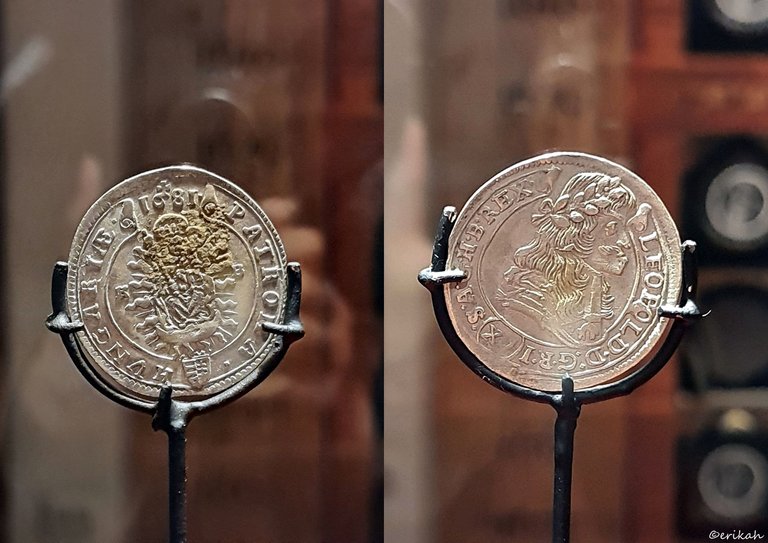
There were these two coins displayed and I see I missed to take a photo of the slide explaining what these were. Need to be more careful next time. Anyway, the one on the left dates back to 1681 and the other one comes from the same era. It's a lovely work, no matter how you look at it. It's 342 years old.
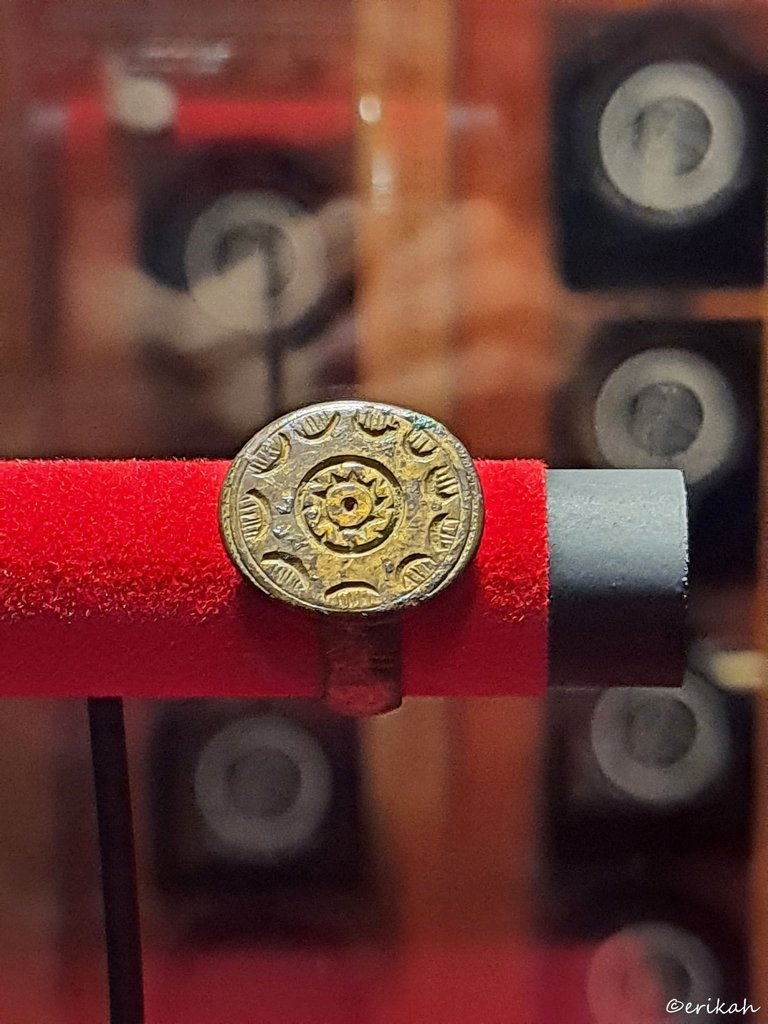
I struggled with this one quite a lot as capturing something under glass is a pain, but I did it finally.
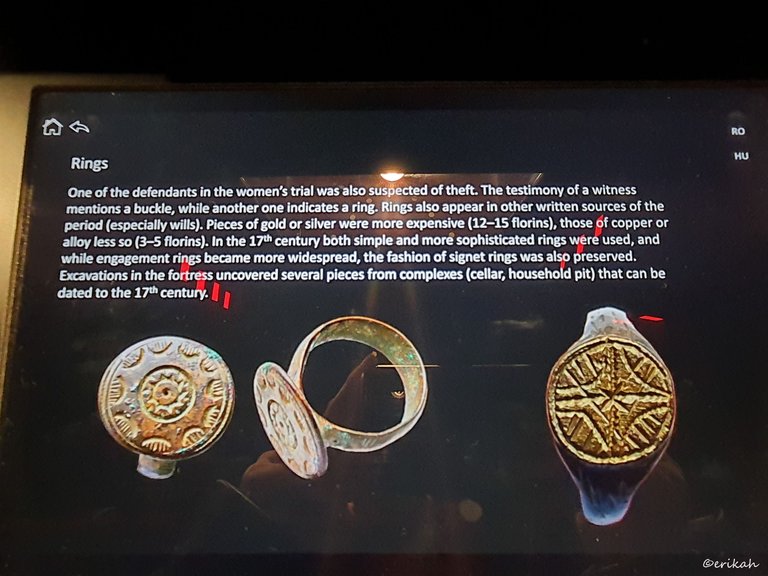
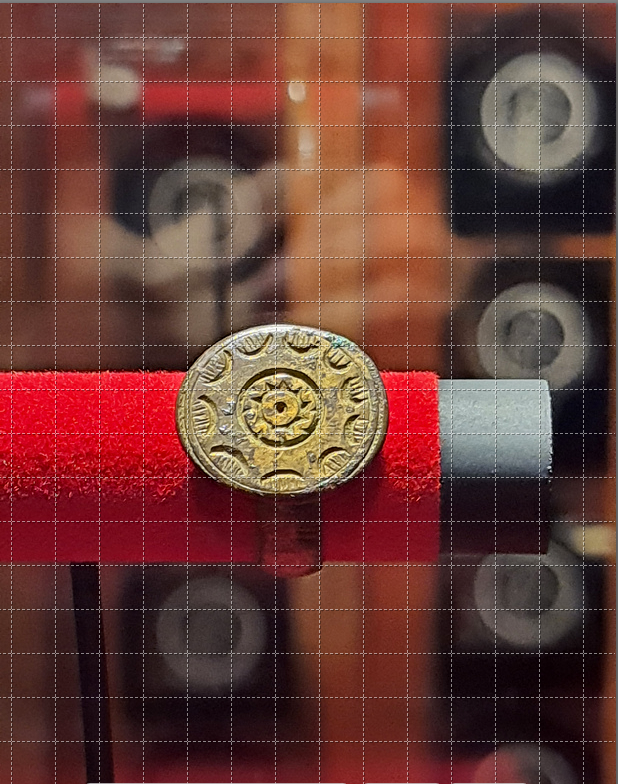
(Not that it matters to anyone, but checking the lines, look at this. Usually my biggest problem is holding the camera straight and always have to straighten the photos. Not this one though. I guess I was lucky.)
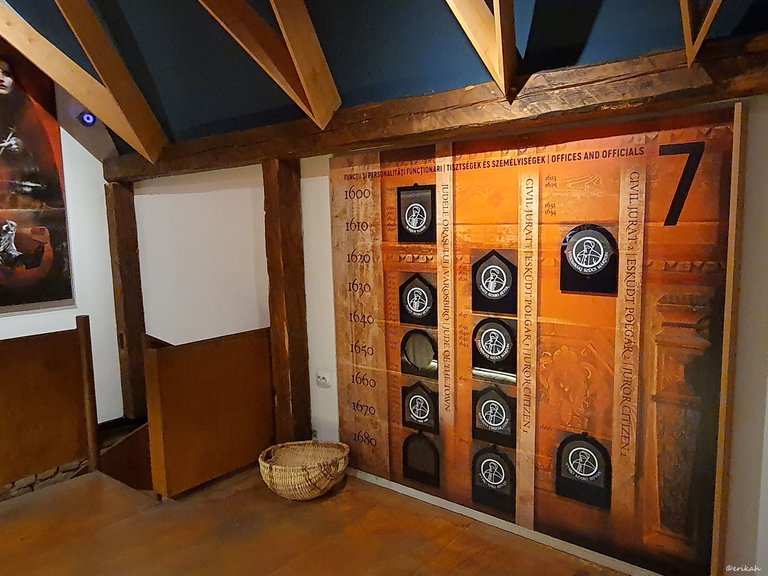
Offices and Officials in the 17th century. Whoever the designer of the exhibition was, did an excellent job. The colors are perfect and the design was pleasing the eye for sure.

These were the stairs down to the basement. I always wanted to do a photo shoot with such stairs, but never had the occasion as these spiral staircases are not available on any corner. Staircases are always lovely to photograph and I hope one nice day I'll have the chance to take a few cool black and white photos. Here, however, this was the best I could do and it was not enough.
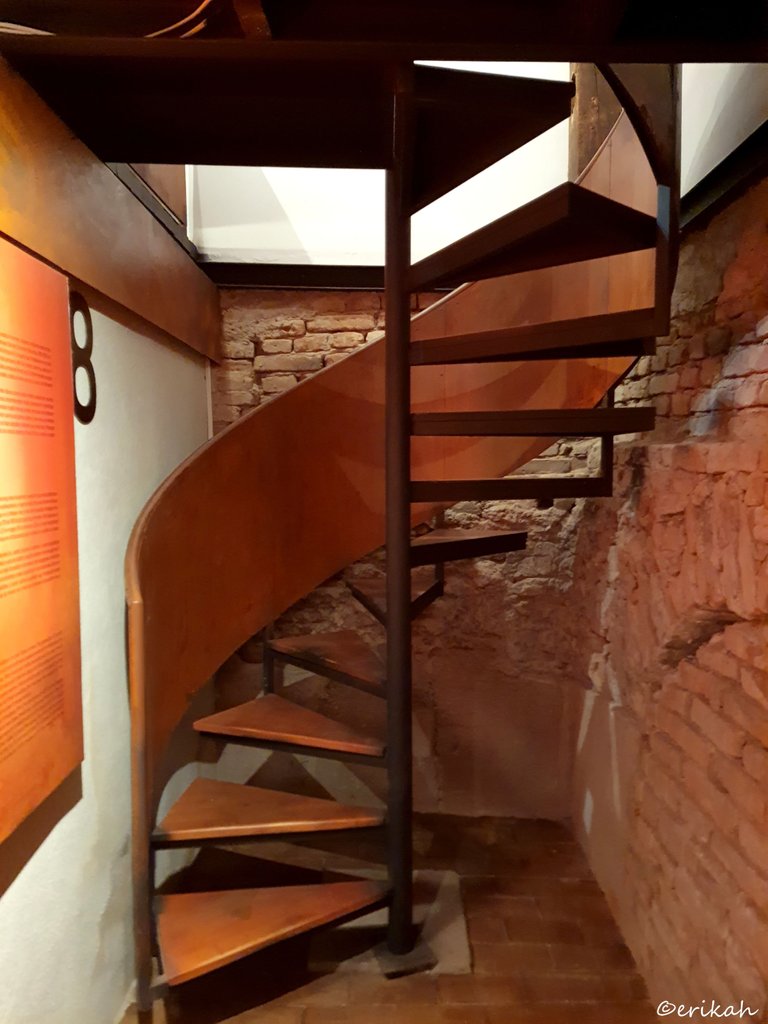
This was how the staircase looked like from the prison cell. Even though it's not the best shot as the light I had was the light in the room, it's still perfect for me and this is why.
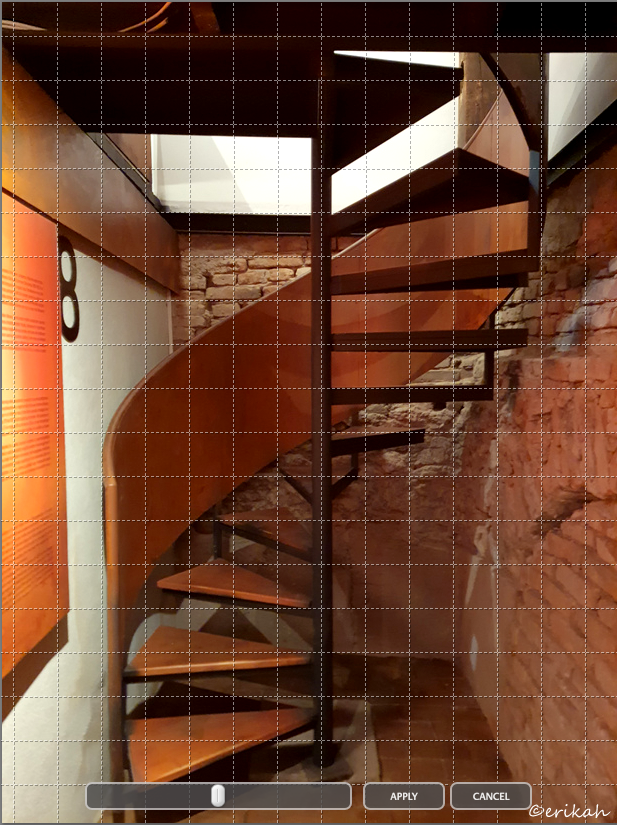
I was able to hold the camera right, for the second time, as this photo is not straightened. 😂
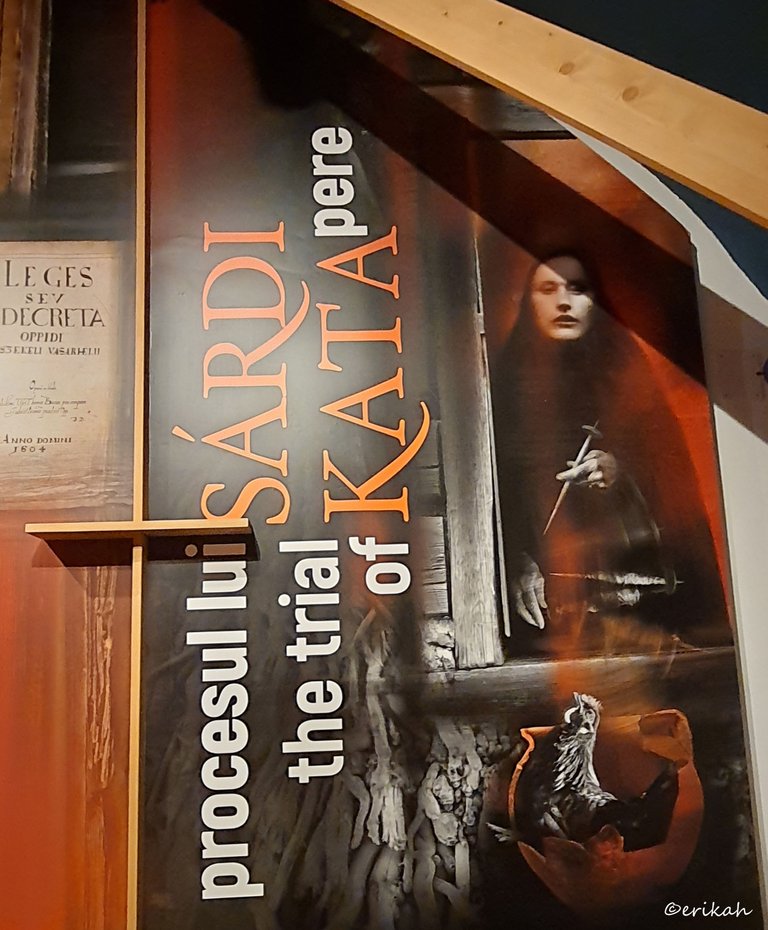
Now you may be wondering where that staircase is leading. It has something to do with the trial of Kata Sárdi.
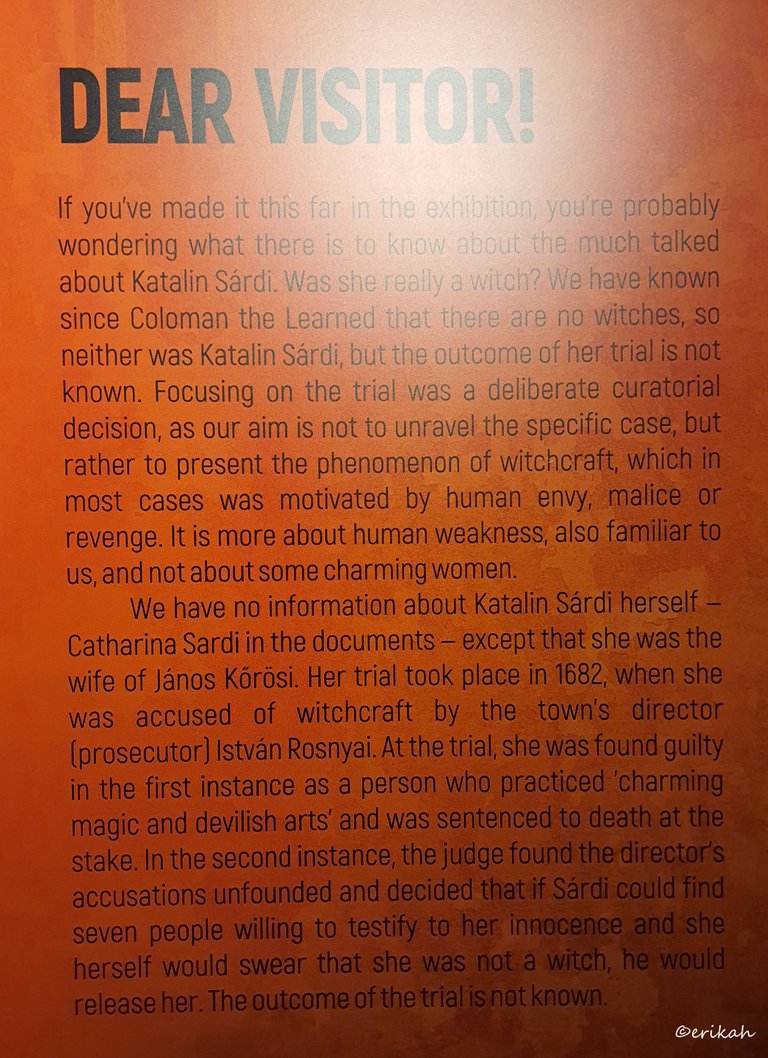
Sorry for the light, it was not my flash, but the museum's light.
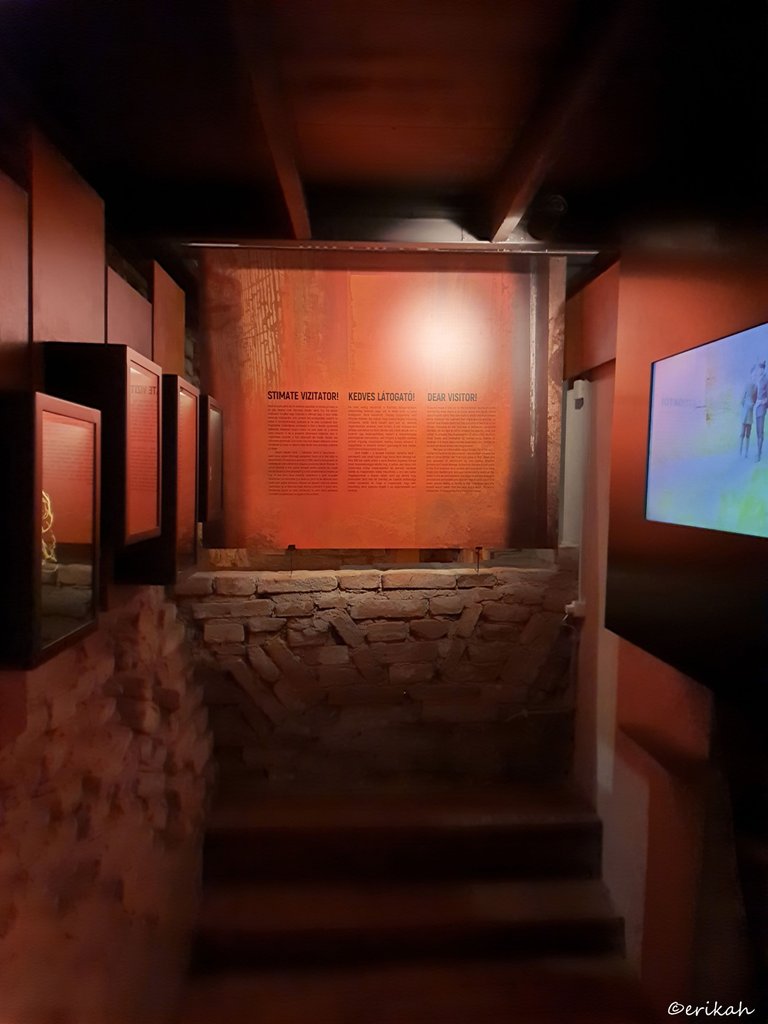
The basement basically was a very small space, with no door or window. Lucky me, on my way out of the museum, I bumped into the archeologist, who participated at the excavations, who told me the followings. Quoting:
Documents mention a prison inside the fortress's walls, but they were not able to find it. So they suspect this space served as a prison. He mentioned that the justice system back in those days was very different. Trials were fast and if there were a couple of witnesses testifying against you, you could be convicted of any crime you did not even commit. Once locked in such a room, no one could live for long. Living without fresh air and light is not possible for long.
I must admit, I'm not suffering of any respiratory disease, but humidity was so high down there that I started coughing, the minute I got there.
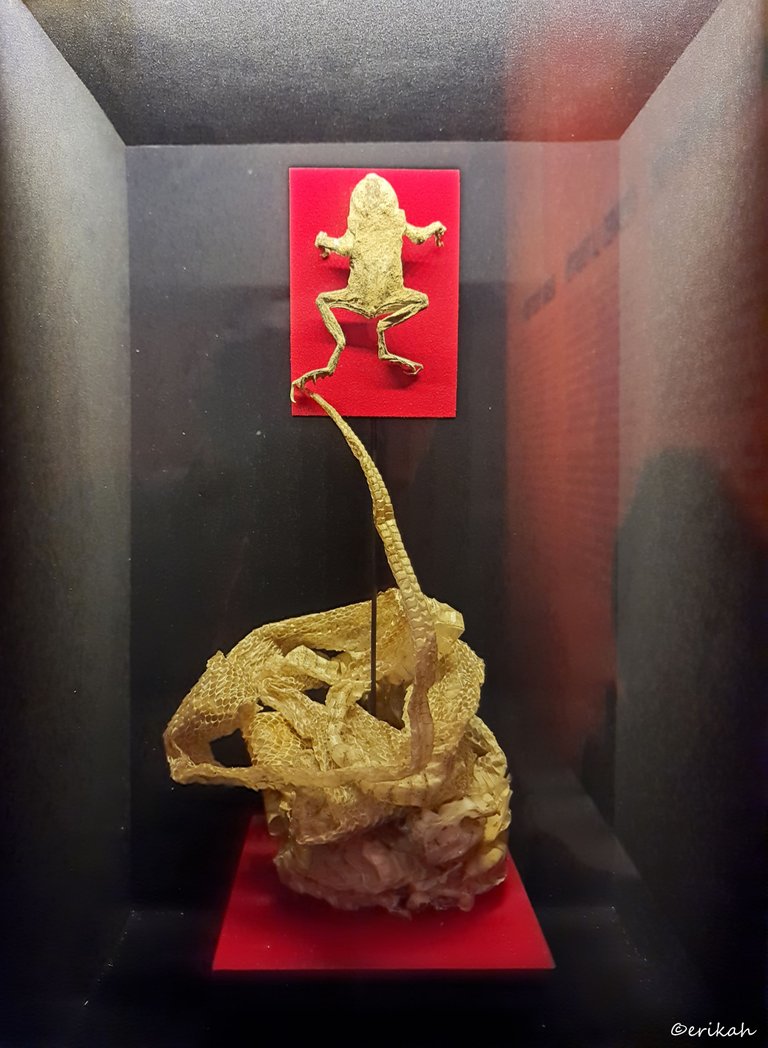
There were some crazy stuff there, like this frog and a snake skin.
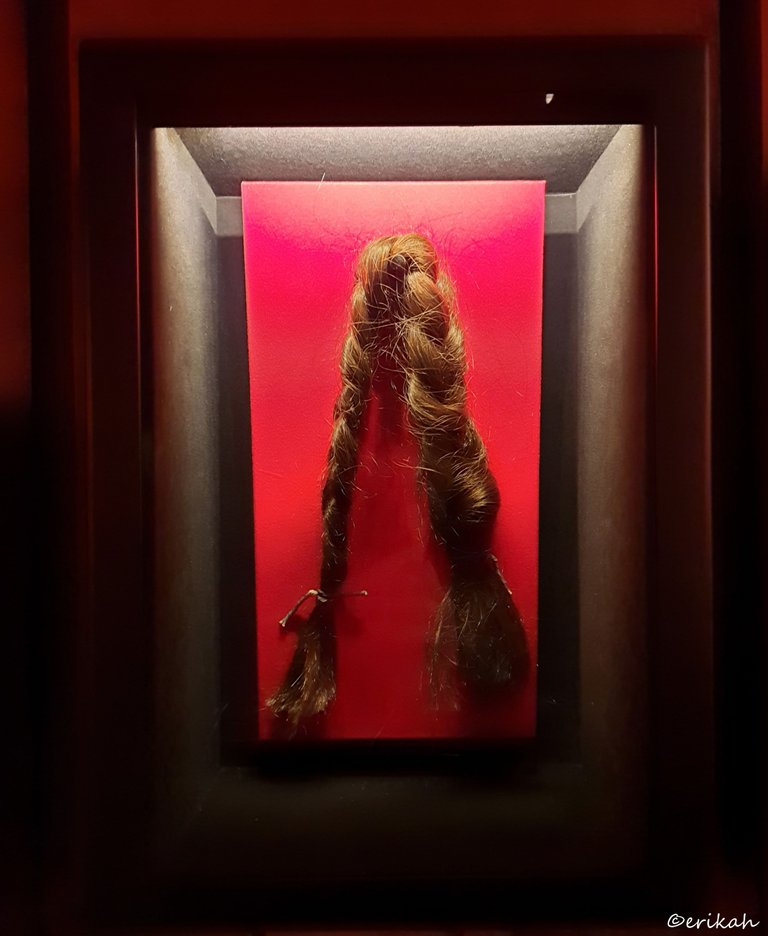
I'm not sure who's hair was this.
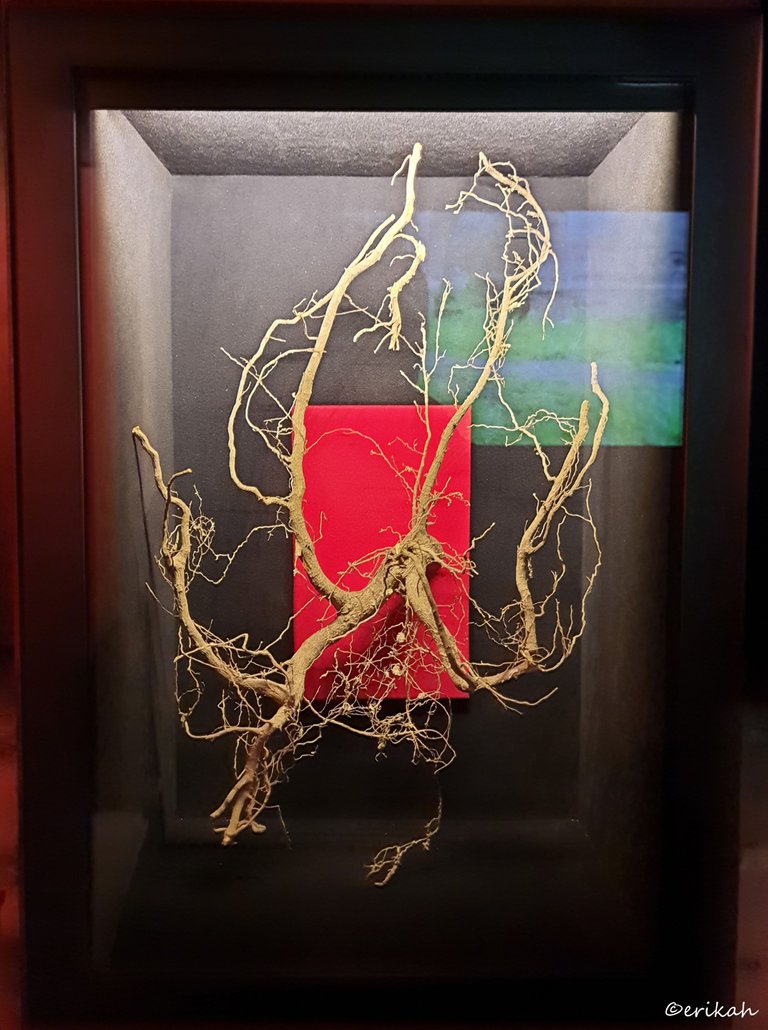
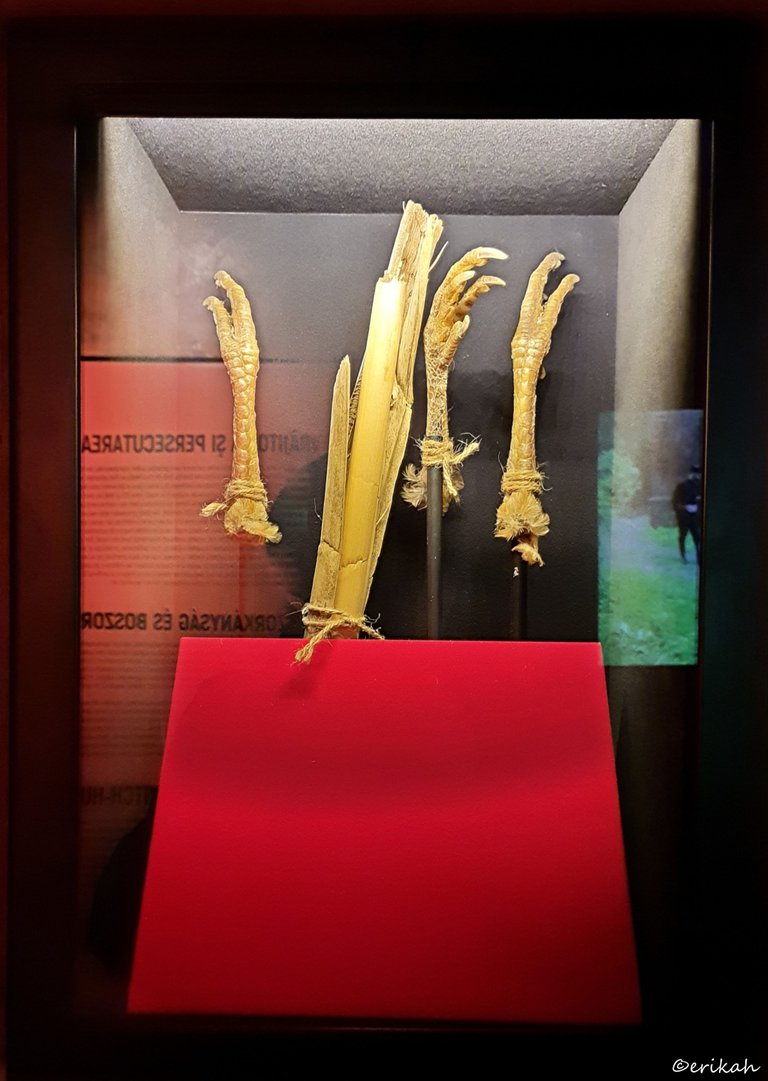
I suppose these things were used in witchcraft.
I hope I did not scare you away with this story and you were able to enjoy the journey with me. Let me know in a comment. I'm not going to ask which one is your favorite this time :)

If you're a newbie, you may want to check out these guides:
- Communities Explained - Newbie Guide
- Cross Posting And Reposting Explained, Using PeakD
- Hive Is Not For Me
- How To Pump Your Reputation Fast - Newbie Guide
- Tips And Tricks & Useful Hive Tools For Newbies
- More Useful Tools On Hive - Newbie Guide
- Community List And Why It Is Important To Post In The Right Community
- Witnesses And Proposals Explained - Newbie Guide
- To Stake, Or Not To Stake - Newbie Guide
- Tags And Tagging - Newbie Guide
- Newbie Expectations And Reality
